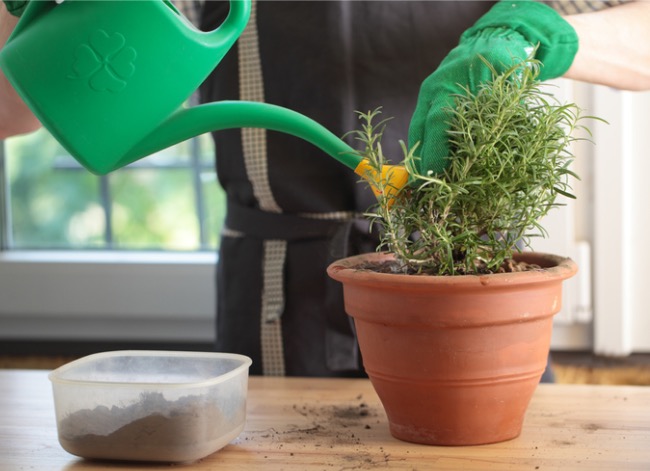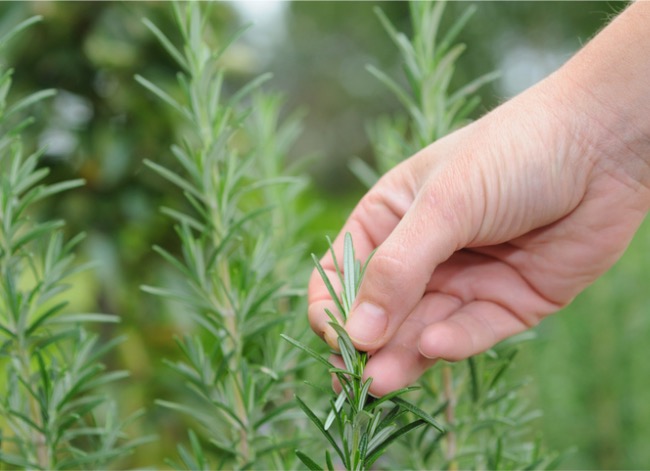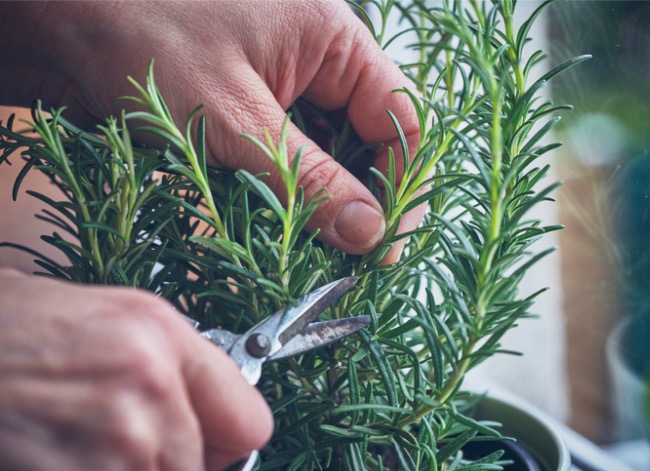We may earn revenue from the products available on this page and participate in affiliate programs. Learn More ›
There’s no need to be a pro gardener to enjoy the benefits of fresh herbs. Anyone can learn how to grow rosemary and other herbs and edibles indoors. Pick off the needle-like sprigs anytime you need to liven up a lamb or chicken dish. Just make sure to give the aromatic herb plenty of room to grow.
Add some variety to your kitchen herb garden with rosemary. Here’s how to grow rosemary indoors, from seed to harvest.
Tools & Materials
Bobvila.com may earn a commission from purchases made through these links.
BEFORE YOU BEGIN
Professional growers typically use cuttings to propagate rosemary. However, rooting rosemary cuttings requires you to have an already established plant on hand, and seeds are more accessible to home gardeners. Expect seeds to germinate very slowly—some may not even germinate at all. For best results, sow more rosemary seeds than you think are necessary.
The following instructions explain how to plant rosemary seeds to grow mature plants. If you’re impatient and don’t want to wait for seeds to germinate, you can choose to purchase potted rosemary and follow the care tips below for how to grow rosemary indoors.
Keep reading to find out how to start your rosemary plant from seed.
STEP 1: Choose where to grow rosemary indoors.
Rosemary is a Mediterranean plant that prefers full sunlight and loses its vitality in the shade. To ensure your rosemary thrives, pick a sunny spot indoors or use an artificial grow light. If you plan to grow several plants indoors, consider a grow shelf equipped with grow lights.

STEP 2: Plant rosemary seeds.
Plant rosemary seeds by sowing them in a pot of well-draining soil and covering them gently with an extremely thin layer of soil mix. Carefully mist the topsoil without soaking it. Use bottom heat to help speed up germination. An example of a bottom heat source is a heat mat like this highly rated option available at Amazon—a top pick in our researched guide to the best seedling heat mats.
Be careful not to overwater once seeds germinate, since rosemary seedlings are prone to damping off. When seedlings get their second set of leaves, thin to all but one seedling
To grow rosemary seeds or mature plants indoors, be sure to choose a container that’s at least 8 inches in diameter and fill it with a well-draining, sandy soil mix, plus a drainage hole. A terra-cotta pot is ideal because the material doesn’t hold water and helps the soil dry out between waterings.
STEP 3: Water, and monitor temperature and humidity.
Rosemary plant care requires a few essential considerations. How often to water rosemary depends on the pot you’ve selected. If the plant is in a terra-cotta container, you’re unlikely to overwater. However, you should still be careful not to overwater. When watering rosemary, feel the topsoil to make sure it has completely dried out. In some cases, you may not need to water for 2 weeks or more.
However, while rosemary plants love to have dry roots, they also appreciate high humidity levels. You can keep humidity levels high without drowning plant roots by misting your plant every few days. This is especially important during the winter when heating sources can dry out the air more than usual.
Like other Mediterranean herbs, rosemary prefers warm temperatures. Aim for ambient temperatures between 55 and 80 degrees. Anything lower than 30 degrees can potentially harm or kill your rosemary plant.

STEP 4: Provide the right light and fertilizer.
When growing rosemary, you’ll need plenty of bright direct sunlight. A windowsill often won’t provide enough light in most homes, especially during the winter months. Opt for a south-facing window or an artificial light source instead. Keep the light source close to the plant, but make sure there’s enough room between the grow light and the foliage to prevent damaging the leaves.
Feed rosemary monthly with a balanced liquid fertilizer starting in the spring. You can pause feedings during the late fall and winter until the growing season begins anew.
STEP 5: Harvest indoor rosemary.
Foliage will grow back faster if you harvest sprigs of rosemary during the growing season. Still, it’s OK to cut pieces at any time of year if you’re growing rosemary indoors. During the growing season, aim to harvest more often to encourage growth. Weekly trimmings will help keep your plant healthy.

Typically, rosemary is most pungent just before it begins to flower. This is when you want to harvest if you plan to dry the leaves.
Now that you know how to care for rosemary, you can enjoy harvesting from your plant all year round. Resist the urge to overwater, keep the plant away from drafty spots, and keep harvesting for a healthy, fragrant rosemary plant.

